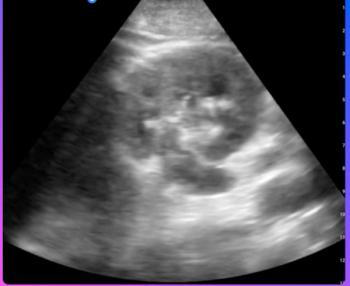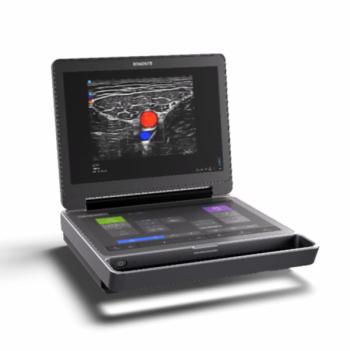
Method for ultrasound diagnosis of pneumoperitoneum undergoes testing
Diagnosis of pneumoperitoneum with ultrasound could be more consistent and reliable if operators look for the enhanced peritoneal stripe sign. A recent study from an emergency room setting in India showed that this method, which proved reliable in animal models, was also an accurate sign of air in the peritoneal cavity in humans.
Diagnosis of pneumoperitoneum with ultrasound could be more consistent and reliable if operators look for the enhanced peritoneal stripe sign. A recent study from an emergency room setting in India showed that this method, which proved reliable in animal models, was also an accurate sign of air in the peritoneal cavity in humans.
Dr. Ashwin Asrani, from the radiology department at Seth G S Medical College in Mumbai, India, conducted the first large-scale study in humans to test the accuracy of a specific sonographic sign of pneumoperitoneum. This sign was first described in the literature using an animal model, then noted in a few patients who had undergone laparoscopy.
Asrani examined 600 consecutive patients presenting with acute abdominal pain in the emergency ultrasonography department at King Edward Memorial Hospital. As part of their clinical workup, patients underwent plain radiographs, CT of the abdomen when necessary, and ultrasound exams looking for the enhanced peritoneal stripe sign.
Asrani was blinded to the results of the CT and radiographs when he did the ultrasound exams.
He found the enhanced peritoneal stripe sign in 24 of the 600 patients. Based on final diagnosis - involving intraoperative findings, clinical follow-up, and the other imaging techniques - 21 of these patients were found to be positive for pneumoperitoneum. There were three false positives and no false negatives, producing a sensitivity of 100%, specificity of 99%, positive predictive value of 87.5%, and negative predictive value of 100%.
Currently, CT and radiographs are used to diagnose pneumoperitoneum because the accuracy of ultrasound exams depends entirely on the individual operator. Looking for the enhanced peritoneal stripe sign provides a reliable and accurate sonographic sign for the diagnosis of pneumoperitoneum.
Newsletter
Stay at the forefront of radiology with the Diagnostic Imaging newsletter, delivering the latest news, clinical insights, and imaging advancements for today’s radiologists.




























